Bucharest is the capital of Romania and the most visited city in the country. Its uniqueness is rendered, first of all, by the vastness of the architectural elements. In addition to the cultural and historical spaces as well as established objectives, you will also have many options to spend your free time. Bucharest combines the old and the new in a unique way that attracts two million tourists annually.
The first official historical mention of the city with its contemporary name dates from the Middle Ages, 1459. In short, the historic timeline of the capital can be represented as follows: vassal of the Ottoman Empire, periods under Russian occupation and short discontinuous periods of Habsburg rule.
In 1881 Bucharest became the capital of the Romanian Principalities, after the unification of Moldavia with Wallachia. After the unification of Transylvania with Romania on December 1, 1918, Bucharest became the capital of the entire country. The interwar period was auspicious for the city as it developed culturally and administratively and, during which, it was known as “little Paris“. Between the end of the Second World War and the 1989 revolution, Romania was under the communist regime, time when the face of Bucharest changed dramatically.
Bucharest is located in the southeast of Romania and its neighbors are: in the north – Ploiesti, in the south – Giurgiu, in the east – Dobrogea and in the west – Oltenia. The capital-city is located in the Vlăsiei Plain, which is an integral part of the Romanian Plain.
Palace of Parliament – is the largest administrative building in the world after the Pentagon and was built following the architectural style of socialist realism. Its construction began in 1984 and was completed in 1997 (although there are still areas under construction).
It is divided into 23 sections and is the workplace for both the Romanian Parliament and the Chamber of Deputies. In total, the Palace of the Parliament consists of 1,100 rooms (only 400 are in use), 8 underground levels (at the lowest level, there is a nuclear-resistant bunker that communicates with other areas through a tunnel structure spanning over 20 kilometers), and its value is estimated at over 3 billion euros.
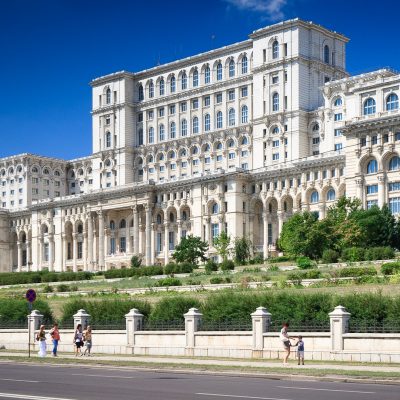
The Romanian Athenaeum – is an iconic building of Bucharest and was constructed between 1886 and 1888, combining neoclassical and eclectic styles. Since 2004, the Romanian Athenaeum has been listed as a historical monument, being considered one of the most valuable edifices with high national and universal significance.
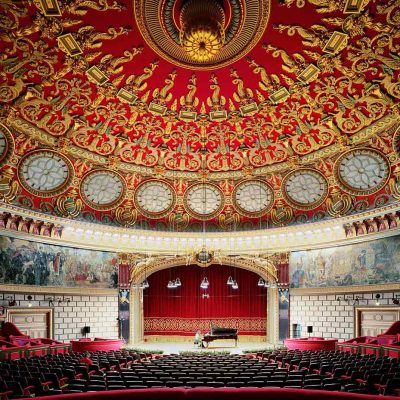
The Arc de Triomphe – is a monument of significance for the Romanian people. Located in the northern part of Bucharest, this historical monument stands at a height of 27 meters, being a symbol associated with Romania’s victory in the First World War.
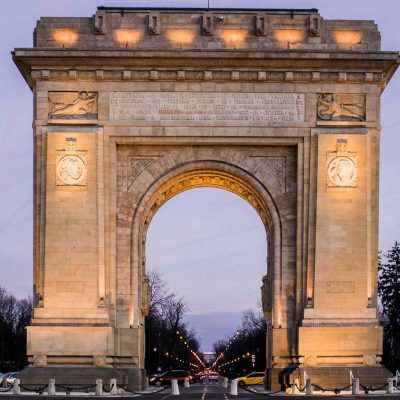
The Museum of the Romanian Peasant – is a museum that represents Romanian folk traditions and national art. In terms of size, it is the second-largest open-air museum in Romania, surpassed only by the Astra Museum in Sibiu.
It is a must-visit when in Bucharest because it effectively conveys the experience and life of the Romanian people from a century ago. Get lost in its alleys and relax while admiring traditional houses from all regions of the country, right in the heart of the capital.
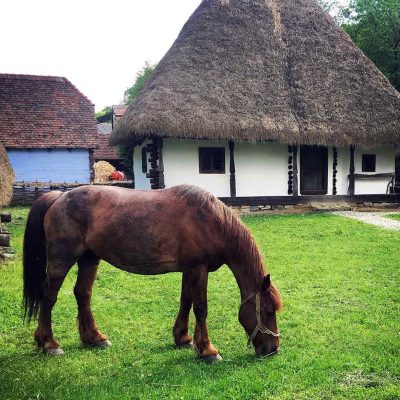
The Grigore Antipa National Museum of Natural History – is the largest museum of its kind in Romania, containing over two million exhibits grouped into various categories such as zoology, paleontology, mineralogy, ethnography, etc.
Its first version dates back to 1834, and following several format and location changes, it reopened in 2011 after three years of renovations. You can find it at 1 Kiseleff Road, and the entrance fee is 20 lei for adults and 5 lei for children, students, and seniors.
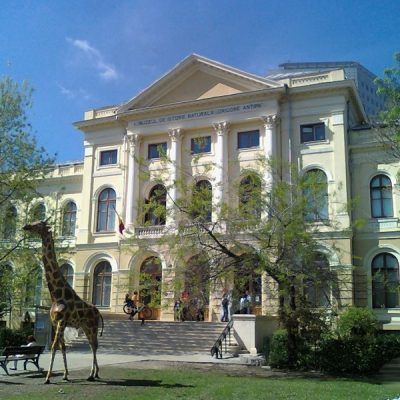
The Old Centre – In the historic center, you will find numerous tourist attractions such as the Stavropoleos Monastery, Caru cu Bere, the CEC Palace, the statue of Trajan, and the Royal Court.
We invite you for a stroll through Lipscani Street area. It’s a vibrant destination for those seeking bohemian cafes, traditional restaurants, and nightclubs, all in an atmosphere that exudes the bustling energy of nightlife.
The Old Town of Bucharest is definitely a place that captivates you with its unique blend of history and contemporary fun.
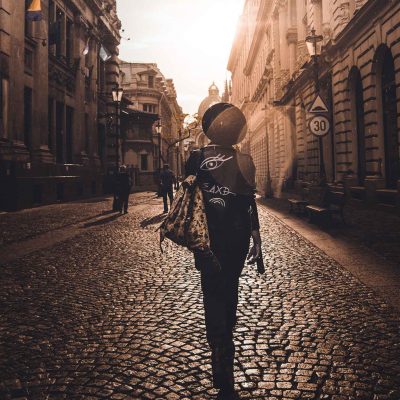
Bucharest has direct connections with most European capitals, as well as with the largest cities in Romania.
The city has two airports: Henri Coanda Airport (Otopeni) and Aurel Vlaicu Airport. The first has domestic flights to Arad, Bacau, Baia Mare, Cluj-Napoca, Constanța, Iași, Satu Mare, Suceava, Târgu Mureș, Timișoara. External flights have connections with many other airports in Europe, North America, Asia and Africa. Aurel Vlaicu Airport is intended for low-cost airlines that serve both domestic and international flights.
For those who are going to rent a car in the country, the following information is really useful:
The capital of Romania represents the most important logistic node in the country, being the starting point of the following national roads and highways to which you can find attached the related routes:
If you want to travel by train around the country the railway tracks of CFR (the national train company) leave Bucharest, reaching all the main cities.
If you prefer a faster option, you can choose to travel by bus / minibus. Here you will find all the necessary information for this: bus stations and bus stops, departure and arrival times, destinations.

If you like music festivals, in Bucharest you will find one to your taste, regardless of the style of music you prefer. Here you have a list with some of them, but you should know that every weekend there are events for all tastes.
Come and have a good time, enjoy music, nice people and magical places.